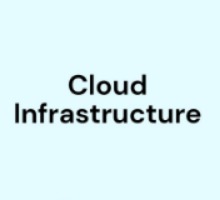Description
Introduction of Serverless Computing with GCP
Serverless computing allows developers to build and deploy applications without managing the underlying infrastructure. Google Cloud Functions and Google App Engine are two serverless platforms that provide powerful solutions for scaling applications in the cloud. This course explores both platforms, their unique features, and best practices for building, deploying, and managing serverless applications on Google Cloud.
Prerequisites of Serverless Computing with GCP
Before starting this course, participants should have:
- Basic understanding of cloud computing and Google Cloud Platform (GCP).
- Familiarity with programming languages such as Python, JavaScript, or Go.
- Knowledge of web development and building APIs.
- Basic experience with Google Cloud Console and the Cloud SDK.
- Understanding of HTTP and RESTful services.
Table of Contents
- Introduction to Serverless Computing
1.1 What is Serverless Computing?
1.2 Benefits of Serverless Architectures
1.3 Key Concepts: Functions, Event-driven, and Microservices
1.4 Google Cloud Serverless Solutions: Functions vs. App Engine
1.5 Setting Up Your Google Cloud Environment - Getting Started with Google Cloud Functions
2.1 Overview of Google Cloud Functions
2.2 Writing Your First Cloud Function
2.3 Deploying and Managing Functions
2.4 Event-Driven Architecture with Cloud Functions
2.5 Integrating Cloud Functions with Other GCP Services - Building Applications with Google App Engine
3.1 Introduction to Google App Engine
3.2 Choosing Between Standard and Flexible Environments
3.3 Deploying Your First App on App Engine
3.4 Managing App Versions and Traffic Splitting
3.5 Scaling Applications with App Engine - Serverless API Development
4.1 Building REST APIs with Google Cloud Functions
4.2 Using API Gateway for API Management
4.3 Securing APIs with Authentication and Authorization
4.4 Integrating Cloud Functions with Cloud Storage and Databases
4.5 Logging and Monitoring Serverless APIs - Managing and Monitoring Serverless Applications
5.1 Monitoring Google Cloud Functions with Cloud Monitoring
5.2 Using Cloud Logging for Debugging and Troubleshooting
5.3 Automating Serverless Workflows with Cloud Pub/Sub
5.4 Setting Up Alerts and Notifications
5.5 Optimizing Performance in Serverless Environments - Advanced Serverless Features
6.1 Event-Driven Computing with Cloud Functions
6.2 Integrating with Cloud Pub/Sub for Event Processing
6.3 Serverless Data Pipelines with Cloud Functions
6.4 Advanced Configuration and Deployment Strategies
6.5 Using Cloud Functions with Cloud Storage, Firestore, and BigQuery - Best Practices for Serverless Application Development
7.1 Code Optimization for Serverless Environments
7.2 Managing Dependencies and Cold Starts
7.3 Cost Optimization and Resource Management
7.4 Security Best Practices for Serverless Applications
7.5 Handling Error and Failure Scenarios - Serverless Development with CI/CD
8.1 Setting Up Continuous Integration and Delivery for Cloud Functions
8.2 Automating Deployment Pipelines with Cloud Build
8.3 Integrating Source Control with Cloud Functions and App Engine
8.4 Testing Serverless Applications
8.5 Monitoring Deployments and Rollbacks - Scaling Serverless Applications
9.1 Auto-Scaling in Google App Engine(Ref: Cloud Migration Strategies with Google Cloud Platform)
9.2 Handling Traffic Spikes with Cloud Functions
9.3 Horizontal and Vertical Scaling Considerations
9.4 Best Practices for Optimizing Resource Usage
9.5 Managing Latency and Throughput - Case Studies and Real-World Applications
10.1 Serverless Microservices Architecture Case Study
10.2 Building Event-Driven Applications with Cloud Functions
10.3 E-Commerce and Real-Time Data Processing with App Engine
10.4 Serverless Solutions for IoT and Mobile Applications
Conclusion
After completing this course, participants will have a solid understanding of serverless computing with Google Cloud Functions and App Engine. They will be equipped to develop, deploy, and manage serverless applications that are scalable, secure, and cost-effective. By leveraging these platforms, developers can focus more on writing code and less on infrastructure, while taking advantage of the powerful tools offered by Google Cloud for building modern cloud-native applications.






Reviews
There are no reviews yet.